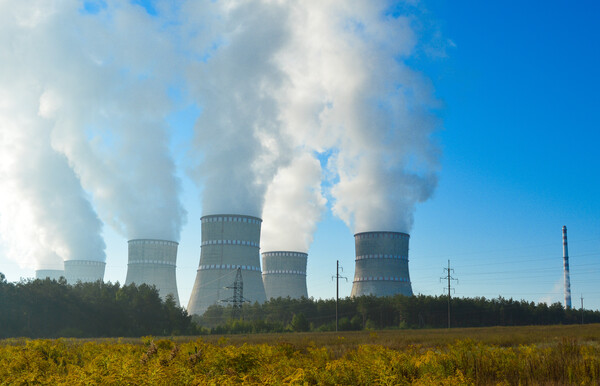Over the past year, there has been a divergence in the energy market: spot uranium advanced 12% while oil, natural gas, and coal all fell anywhere from 30-70%.
The reason? For the first time in history, uranium has slipped into a persistent and widening deficit.
Some say uranium has reached a pivotal inflection point that could force the price higher by as much as three- to four-fold over the next several years.
However, uranium is far less transparent than other commodity markets. So let’s take a closer look.

Today’s Uranium Market
Uranium’s structural deficit has accelerated dramatically since 2021. Reactor demand bottomed in 2020 at 161 million pounds of U3O8 (triuranium octoxide), and is expected to reach 188 million pounds this year.
Meanwhile, primary uranium production remained depressed through 2022 at 120 million pounds—a multi-decade low. Secondary supply of uranium averaged only 22 million pounds, leaving a deficit of nearly 30 million pounds in both 2021 and 2022.
A real market-changing event occurred in 2021, as a new source of demand burst onto the scene: the financial buyer. Led by the Sprott Physical Uranium Trust (SRUUF), financial vehicles have acquired between 25 million and 30 million pounds each year in 2021 and 2022. In effect, these financial vehicles have taken the uranium off the market that was depressing prices.
Unlike open-ended funds, such as the SPDR Gold Shares (GLD), the financial uranium vehicles are closed-ended, meaning the material cannot readily flow back into the commercial market. Once material is purchased, it is usually locked up for a long time.
The end result was that the uranium market experienced a deficit of nearly 180 million pounds between 2020 and 2023. This deficit was met by depleting the commercial inventories that had accumulated following the Fukushima nuclear disaster in Japan in 2011, caused by an earthquake and subsequent tsunami.
In a way, what’s happening is reminiscent of the U.S. meeting oil shortages after Russia invaded Ukraine by pulling oil from its Strategic Petroleum Reserve (SPR).
By the end of 2023, some forecasts say commercial inventories will be down to barely enough to cover reactor demand for 18 months.
Following Fukushima, funding for uranium exploration and development completely evaporated. As a result, there’s been a grand total of zero new mines coming online since the last uranium bull market that ended over a decade ago.
The Future for Uranium Prices
So, what is the outlook for uranium prices through the end of the decade?
Higher prices are in the cards, as global uranium markets seem set to tighten to unprecedented levels. The U.S. Energy Information Administration (EIA) reports that, at the end of 2022, unfilled uranium market requirements for 2023 through 2032 totaled 179 million pounds for U3O8. Globally, looking only at nuclear power plants that are currently under construction, reactor demand is set to grow from 188 million pounds to 240 million pounds by 2030.
If every uranium-producing country gets back to its maximum output (unlikely), primary production of uranium will only grow from 140 million pounds to 174 million pounds by 2030. If secondary supply stays flat at 20 million pounds per year, the annual uranium market deficit will grow from 27 million to 45 million pounds by the end of the decade—and that figure does not include further financial buying.
The cumulative deficit between 2023 and 2030 will likely exceed 250 million pounds, possibly depleting all commercial stockpiles.
Buy Cameco
Uranium may finally be entering into a sustained bull market. Prices have rallied from a 2018 low of $18 to about $58.50 per pound already.
However, even at this higher price, development of any new greenfield uranium deposits is unlikely. The uranium spot price needs to be well above $60 per pound in order to bring both existing uranium mines back into production, and to make it economically viable for new projects to be developed.
This is good news for Cameco (CCJ), the world’s largest publicly traded uranium company. It owns the world’s two highest-grade uranium deposits—McArthur River and Cigar Lake. The company also has interests in tier-one mining and milling operations that have the licensed capacity to produce more than 30 million pounds of uranium concentrates annually, backed by more than 469 million pounds of proven and probable mineral reserves. And, it is a leading supplier of uranium refining, conversion, and fuel manufacturing services.
Cameco recently issued earnings results that short-term focused Wall Street found disappointing. Its quarterly revenue, which came in at $482 million, was down 14% relative to the same period last year; however, management has raised its consolidated revenue outlook for 2023 and also expects to sell higher volumes of uranium this year. The company’s long-term commitments require an average annual delivery of 28 million pounds of uranium over the next five years. That tops the 26 million pounds reported at the end of March.
What’s more, Cameco expects to deliver between 31 million and 33 million pounds of uranium this year, a boost from previous expectations of 29 to 31 million.
That’s why Cameco’s earnings are forecast to increase 148% this year after rising 227% last year. And next year, earnings are projected to rise another 111%. Cameco’s stock is up 23% over the past year and a whopping 60% year-to-date. There’s a lot more to come…
CCJ is a buy on any weakness, in the mid-$30s.





